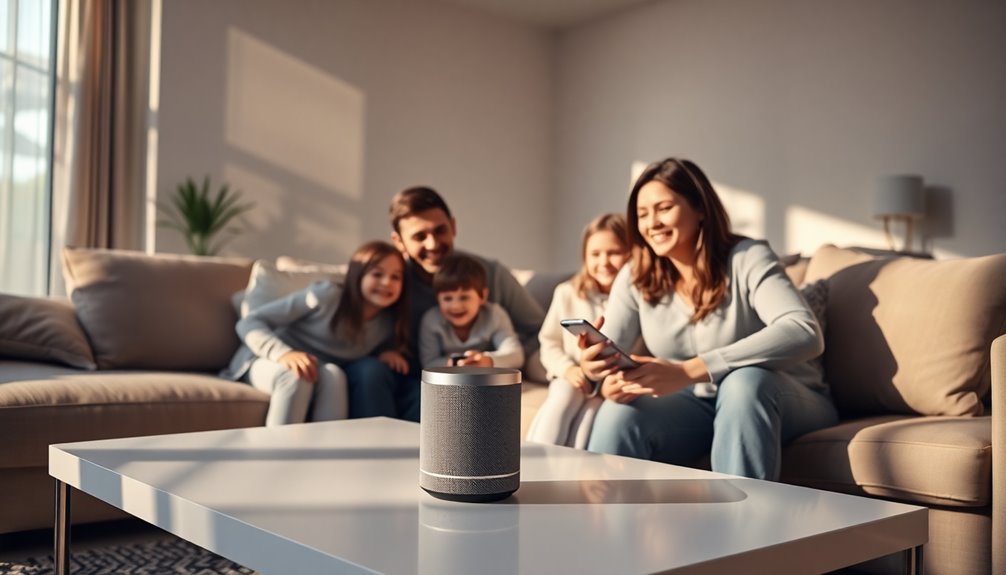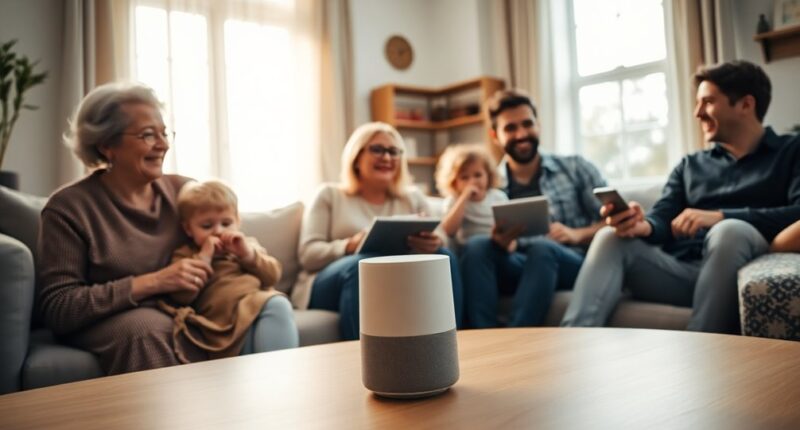You might've noticed how integrated voice assistants have become in daily life. With around 60% of consumers using them, these digital helpers are changing the way you search for information and enjoy music. As smartphones remain the main access point, the trend shows no signs of slowing down. But what does this widespread adoption mean for the future of technology and your interaction with it?

As voice assistants become increasingly integrated into our daily lives, it's no surprise that their adoption rates are soaring, with about 50-60% of the population now using them. In the U.S. alone, approximately 149.8 million people have embraced these digital helpers, making them a common fixture in households and among individuals. You likely find yourself reaching for your smartphone or smart speaker to ask for the weather, play your favorite song, or make a quick call. It's convenient and often feels more natural than typing out a query.
Smartphones are the go-to devices for accessing voice assistants, but smart speakers are also gaining popularity. This shift reflects a growing trend; the number of voice assistants in use worldwide is projected to reach a staggering 8.4 billion by 2024. You may have noticed that Google Assistant, Alexa, and Siri lead the pack, each offering unique features and functionalities that cater to various consumer needs.
When you think about how you use voice assistants, you might realize that most of your interactions revolve around simple tasks. Whether it's searching for information, playing music, or setting reminders, these straightforward use cases dominate the landscape. Trust plays a significant role in your willingness to adopt more advanced features. With 93% of users expressing satisfaction and half of those being very satisfied, it's clear that these tools are meeting your expectations. However, many consumers are still hesitant to rely on assistants for advanced activities like shopping due to trust issues.
You may also find that the compatibility of voice assistants with smart home devices influences your purchasing decisions. As you consider incorporating more technology into your home, the ability to manage it with your voice becomes an attractive selling point. Expectations for future usage are high, as more people anticipate relying on voice assistants for an even broader range of tasks.
Voice search is on the rise, with about 20.5% of people globally engaging with it. This trend is mirrored in the adoption of smart speakers, which nearly doubled from 12% in 2017 to 20% in 2018. Yet, while adoption rates are stable at around 50-60%, privacy concerns often keep you from using voice assistants in public spaces. The comfort of home offers a safer environment for these interactions.
As AI technology advances, you can expect further integration of voice assistants into your daily life. The potential for innovation is vast, and as brands continue to find new applications, your reliance on these digital assistants is likely to grow even more.









